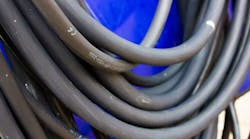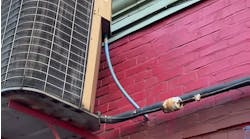In my experience as an electrical trainer and instructor, the easiest and most efficient way to learn National Electrical Code (NEC) navigation is to word associate each chapter title with a specific purpose. The natural arrangement of the Code book, its chapters, and titles can be confusing to early-stage apprentices as well as some field-experienced electricians. It’s safe to say that if you can remember the primary purpose of each chapter, you can move through the Code with confidence and precision.
Let’s take Chapter 4, which is dedicated to stuff you see every day, as an example. This general use equipment does not require unique installation or niche training guidelines — these are essential items you see as you move throughout your day, typically found in a dwelling unit (residential homes and apartments), a place of business (special occupancies), warehouses, or a manufacturing facility (hazardous locations). The general use equipment contained in these Articles encompasses the following areas:
- Distribute
- Control
- Supply
- Utilize electrical power
Here are a few Chapter 4 Articles for equipment/materials that distribute electrical power.
Article 400 — Flexible Cords and Cables
This handy Article covers the specific uses of cords and cables that can prevent the transmission of noise and vibration to general-use appliances and electrical equipment. When tools or equipment must be fastened in place (and permit the ready removal for maintenance and repair of mechanical connections and moving parts), use the handy cords and cables listed in this Article. In addition, these cables are used to distribute power to lamps, elevators, vacuum cleaners, electric heaters, portable power tools, stage lighting and power, electric ranges and dryers, cords used for hard service, and electric vehicle charging stations.
Art. 400 also provides the following information for cables and cords in Table 400.4:
- Cable voltage limitations;
- Description of the outer covering(s);
- Available conductor sizes and gauges;
- Applications and uses permitted for each cord and cable;
- The number of conductors available in a flexible cord or cable; and
- Trade names for cables and cords with their abbreviation or designation letters.
Do’s and don’ts for flexible cables
Keep a few things in mind when selecting cables found in Art. 400. First, flexible cords and cables shall not be used as a substitute for the fixed wiring of a building or structure. Those materials are covered in Chapter 3, Wiring methods, which covers the building stage of construction projects.
Do not run these cables through holes in walls; above structural, suspended, dropped ceilings; or floors. They cannot be concealed by walls, floors, or ceilings or run through doorways or windows. Be mindful not to locate them where they will be subject to physical damage. If you must attach any of these cables to a building surface, follow the provisions of Sec. 368.56(B) Exception 1 through 4.
Article 408 — Switchboards, Switchgear, and Panelboards
This Article covers the equipment that houses overcurrent protective devices (fuses and circuit breakers), buses (single and three-phase), switches, and various auxiliary power-control instruments. This equipment, found in a large or small panel assembly or frame, can be mounted on the face, back, or both — accessible from the rear as well as from the front. Not intended to be installed within cabinets, this also includes equipment that is enclosed on all sides completely (including the top and excluding openings for ventilation and inspection).
This equipment contains doors, removable covers, and is made with sheet metal. Be prepared to navigate this Article for licensing and journeyman examinations. These are important NEC provisions you may be tested on.
Art. 408 covers the following information:
- 4-wire delta high leg identification requirements;
- Support and arrangement of busbars and conductors;
- Additional Code references for grounding and bonding; and
- Minimum spacing requirements between busbars and the bottom of an enclosure.
Installation guidelines
Following are some basic guidelines for installing panelboards, switchgear, and switchboards.
Panels must have a circuit directory (Sec. 408.4), so put a label on it! Every new circuit or circuit modification made in a panel or switchboard should be legibly identified for its specific purpose or use. To avoid confusion, mark, label, or identify any unused overcurrent devices, switches, or spare positions in the panel. Locate the circuit directory on the face or inside of the panel door.
Panelboards, switchgear, or switchboards should not be protected on the “supply side” by any fuse, circuit breaker, or overcurrent protective device that exceeds or has a higher rating than the panelboard does. Cabinets, boxes, couplings, nipples, fittings, supports, and support hardware “in direct contact with the earth” shall be permitted to be installed in concrete or in direct contact with the earth or in areas subject to severe corrosive influences. If the material is approved for that condition, corrosion protection that is approved for the condition must be used (Sec. 300.6).
Enclosures installed in wet locations shall be listed as weatherproof and meet the following guidelines: if it’s surface-mounted, it shall be placed or installed in a way that will prevent moisture or water from entering and accumulating within the cabinet. Mount it so there is at least 1⁄4 in. airspace between the enclosure and the wall or other supporting surface. For any enclosures in wet locations, raceways or cables entering the panelboard or switchboard shall use fittings listed for wet locations above the uninsulated live parts (Sec. 312.2). Nonmetallic enclosures shall be permitted to be installed without the airspace on a concrete, masonry, tile, or similar surface.
Remember, these are minimum guidelines to follow. Your local jurisdiction may have more stringent requirements based on where you’re working.
Follow my column for more practical how-to articles and tips for applying electric basics concepts in the field: Everyday Instructions for Electricians, Introduction to Commercial Service Calculations, Introduction to Residential Service Calculations, The Apprentice’s Guide to Non-Metallic Sheathed Cable, The Apprentice’s Guide to NEC Chapter 4, The Apprentice’s Guide to Art. 300, and the Apprentice’s Guide to Art. 640. For more information on why a structured approach is so important to navigating the NEC and how to put its requirements into practice in real-world settings, read The NEC for Newbies.
Harold De Loach, a master electrician and electrical trainer/instructor, is the founder of The Academy of Industrial Arts (www.taia-school.com) in Philadelphia. With more than 30 years of experience in the field, he writes regular exclusive content for the E-Train and can be reached at [email protected].




